In this edition of Sliced, the 3D Printing Industry news digest, we cover the latest business developments, partnerships, and acquisitions in the additive manufacturing sector.
Today’s edition features the latest 3D printing financials, material developments, research advances, aerospace deals and an array of application innovations, including Adidas’ latest shoe and Sennheiser-additive manufactured headphones.
Read on for the most recent updates from Sigma Labs, PyroGenesis, Norsk Titanium, Fathom, AMT, Desktop Metal, Braskem, Dassault Systemes, Creality, Nexus Spine, Caracol AM, Xact Metal, Velo3D, Nuburu, Conflux Technology, Relativity Space, GE, UpNano, Essentium, Rosswag Engineering and more.

F1, MotoGP and luxury automotive 3D printing
Beginning this week’s update with automotive, luxury car manufacturer Bentley’s Mulliner coachbuilding arm has unveiled a new 3D printing-enhanced performance vehicle. Built as a successor to the Bacalar, the £1.65 million Batur features a more angular, aerodynamic front and rear end, as well as interior trinkets made via advanced technologies, including an ignition button 3D printed from 18-karat gold.
In the world of MotoGP, Caracol AM has worked with Extralab and designer Riccardo Sivelli to 3D print a 6-meter-tall replica of seven-time champion Valentino Rossi’s helmet. Currently on show in Pesaro, the 400-kilo sculpture is meant to celebrate Rossi as a racing legend, while also boosting the city’s bid for selection as Italy’s cultural capital in 2024.
On a smaller scale, model manufacturer Amalgam Collection has launched a 1:8 scale replica of Max Verstappen’s 2021 F1 car. Working from CAD data supplied directly by the team itself, the firm has built an exact replica of the Dutchman’s title-winning car, with the master patterns being created for each piece of the model via 3D printing. Molds were then taken from these patterns and used to create a batch of cast parts, each fettled and fitted before painting, finishing and assembly.
“We have collaborated closely with Red Bull Racing for fifteen years now,” said Sandy Copeman, one of Amalgam’s founding partners. “Now we have enjoyed the opportunity to celebrate the latest success of a team that continues to earn its place at the front of the grid, along with a driver who looks well set to continue making Formula 1 history.”
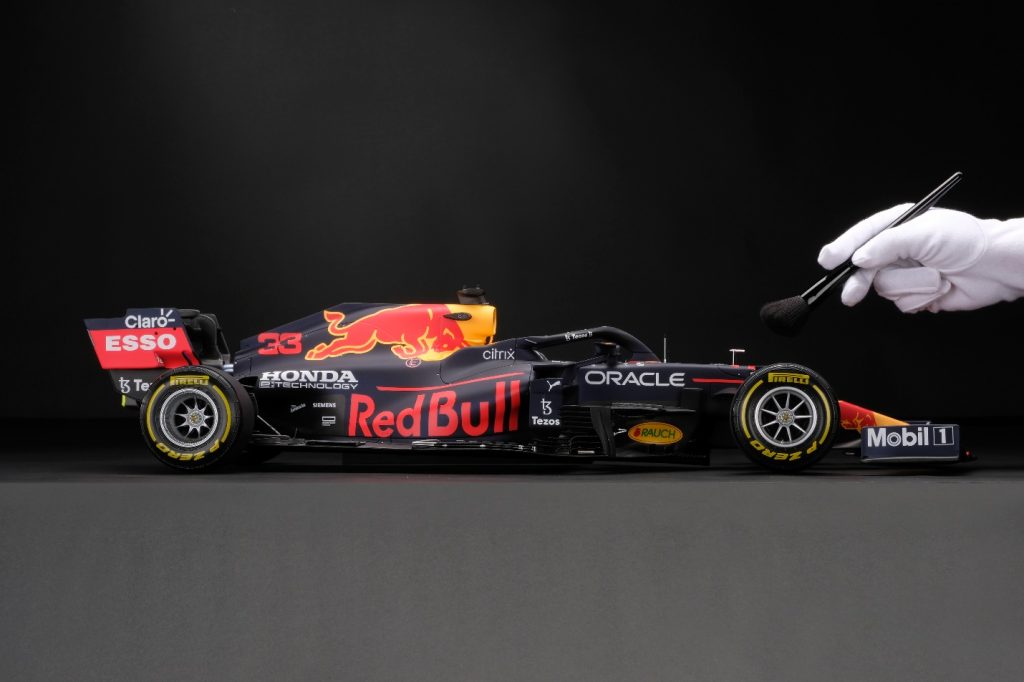
Expansions at LPE, Ogle Models and Xact Metal
Metal 3D printer manufacturer Xact Metal has expanded its footprint in Latin America via a pair of new distribution partnerships with Tecnologías Computarizadas para Manufactura (TCM) and USM Colombia. TCM CEO Juan Diego Gonzalez Luna says his firm’s deal provides “opportunity for technology expansion” in its native Mexico, where “there’s strong demand for affordable metal 3D printers.”
Over in Northern Ireland, Belfast-based 3D printing service provider Laser Prototypes Europe (LPE) has announced an expansion of its own. The UK’s oldest 3D printing bureau has now boosted its online presence with the launch of a new website, which provides users with information on materials and processes, as well as access to its services.
LPE has also announced the installation of another EOS M290 3D printer. The firm’s new addition doubles its capacity on the machine, in a way that should provide clients with higher throughput and shorter lead time production capabilities.
“It [the EOS M290] has been a staple of our service to medical, aerospace and autosport clients,” explains LPE’s Engineering Director Patrick Walls. “We’re frequently being asked to print high-complexity, production-grade parts, which clients want to be perfectly repeatable. The M290 delivers exactly that.”
Elsewhere, Ogle Models has announced the acquisition of a Stratasys Neo 450s 3D printer. The move, which takes the firm’s investment over the past 36 months to almost £2 million, is expected to increase its capacity and ability to produce high definition parts, while enabling it to deliver lead time improvements for customers.
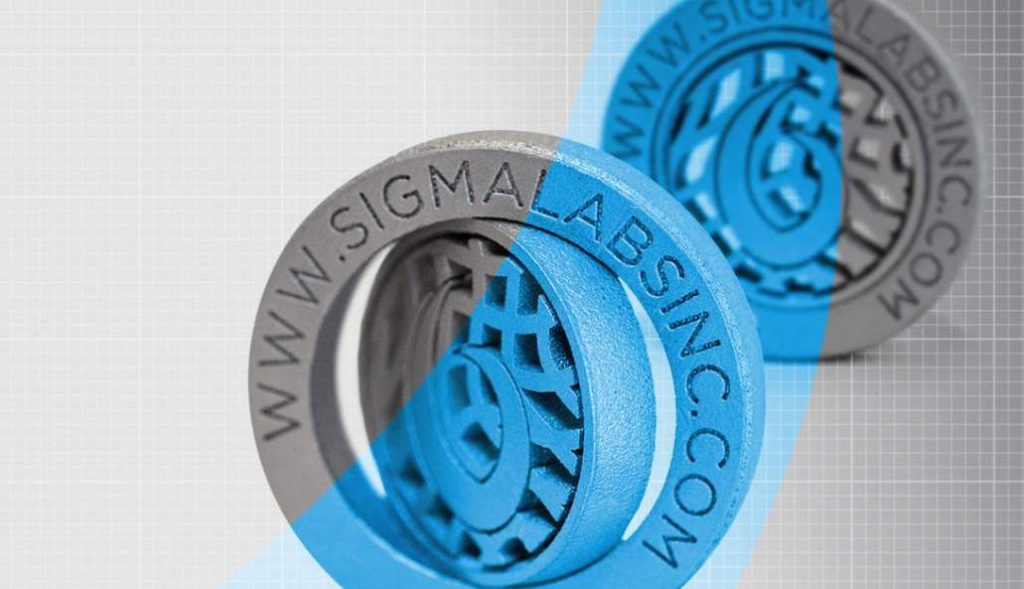
Latest 3D printing financials published
As we head into the final month of Q3, 3D printing’s public firms have each revealed how their businesses are performing via the publication of their Q2 2022 financial results. One of these, quality assurance software developer Sigma Labs, has announced revenue of $237,000 for Q2 2022, a more than three-fold increase on the $52,000 it generated last quarter. At the end of Q2, the firm also had a $240,000 backlog, with around $30,000 of this set to be recognized by the end of 2022.
PyroGenesis, meanwhile, has reported revenue of $5.8 million for Q2 2022, 30.1% less than the $8.3 million it brought in a year earlier. According to the firm’s CEO Peter Pascali, its revenue was impacted by “international and regional logistical and resourcing headwinds,” but it does have a $35 million backlog and its “pipeline continues to expand.”
At Norsk Titanium, the Rapid Plasma Deposition 3D printing developer generated an income of just $0.9 million in H1 2022, a 67.9% decline on the $2.8 million it reported in H1 2021. Of this, $40,000 was accounted for by the sale of 3D printed parts and $10,000 came from R&D activities, but the majority was brought in via Innovation Norway grants.
In the US, Fathom Digital Manufacturing has reported H1 revenue of $42.0 million, 17.0% more than the $35.9 million it attracted in H1 2021, with $3.6 million of this being organic growth and $2.5 million coming from acquisitions. In a statement issued alongside the results, CEO Ryan Martin said it remains focused on “investing in new technologies and expanding the breadth of its leading offerings.”
Ceramic 3D printer developer Lithoz has also announced revenue growth in H1 2022, having generated its highest-ever half-year revenue. While the company’s privately-traded, thus it hasn’t published its financials in full, it has revealed that at the end of Q2, it had already hit two-thirds of its target order intake for the entire year. Lithoz’s 2022 outlook is that it’ll be “another leading and successful year.”
Lastly in financial news, post-processing system manufacturer Additive Manufacturing Technologies (AMT) is reportedly set to more than triple its revenue and achieve a turnover of $15 million to $20 million. AMT CEO Joseph Crabtree told Prolific North that its success lies in the ability of its automated post-processing offering to help make 3D printing a “viable alternative” to traditional production methods.
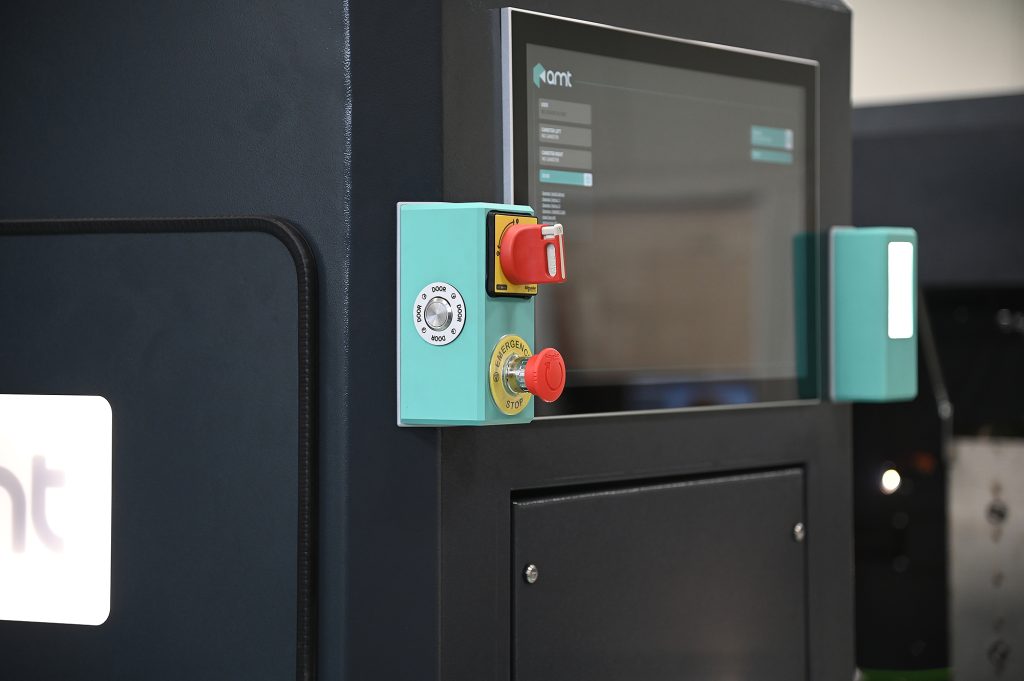
Desktop Metal, Braskem and RPM in material advances
In material developments, 3D printer manufacturer Desktop Metal has worked with Henkel to develop the first initial workflow validations for its Xtreme 8K large-volume Digital Light Processing (DLP) system. These validations provide specifications for printing, curing and cleaning parts created from Henkel’s Loctite 3D printing materials. Developed specifically for the machine and materials, these detailed workflows are said to allow users to achieve ‘optimal and repeatable results.’
Elsewhere, rpm rapid product manufacturing has also begun using the Xtreme 8K with Adaptive3D Elastic ToughRubber material in series production applications. Specifically, thanks to the elastomer’s 90A shore hardness, the firm has been able to target further series applications. So far, in benchmark projects, rpm has manufactured cases, gaskets, seals, cable covers, bellows and compression pads.
In Brazil, petrochemical firm Braskem has partnered with Xenon arc to launch a new direct-to-consumer technology platform. Known as ‘Braskem3D,’ the offering is designed to improve the accessibility of Braskem’s 3D materials in the North American market. As such, Jason Vagnozzi, Commercial Director of AM at Braskem says its “fully-integrated and professionally supported” online e-commerce platform, will deliver a “better overall experience” for its small-to-medium clients.
Dassault Systemes drives architecture innovation
In architecture, industrial designer and Paredo Studio Founder Tony Parez-Edo Martin has used Dassault Systemes’ 3DEXPERIENCE platform to develop a unique air purifier concept. Named the ‘e-flow,’ Martin’s design disguises the device’s air purifying and ventilation functionalities within a soothingly-styled chandelier.
Using Dassault Systemes’ software, the designer was able to iterate designs, drawing them on its 3D sketch tools, before digitally modeling them via its built-in application. As a result, the final product is not just lightweight but functional, and it also features a high degree of biomimicry, made possible via the program’s topology optimization tools.
“The likes of Santiago Calatrava, Zaha Hadid and Antoni Gaudí inspired the design,” Martin told DesignBoom. “I worked with a new application of Dassault Systemes 3DEXPERIENCE platform on the cloud. It is a software that generates the forms through the simulation of airflow and input parameters. It was poetic how the initial form was so organic and shared a likeness with the work of famous architects.”
“The design sources inspiration from nature, mathematics and architecture to be quite poetic and emotive in its dynamic appearance.”
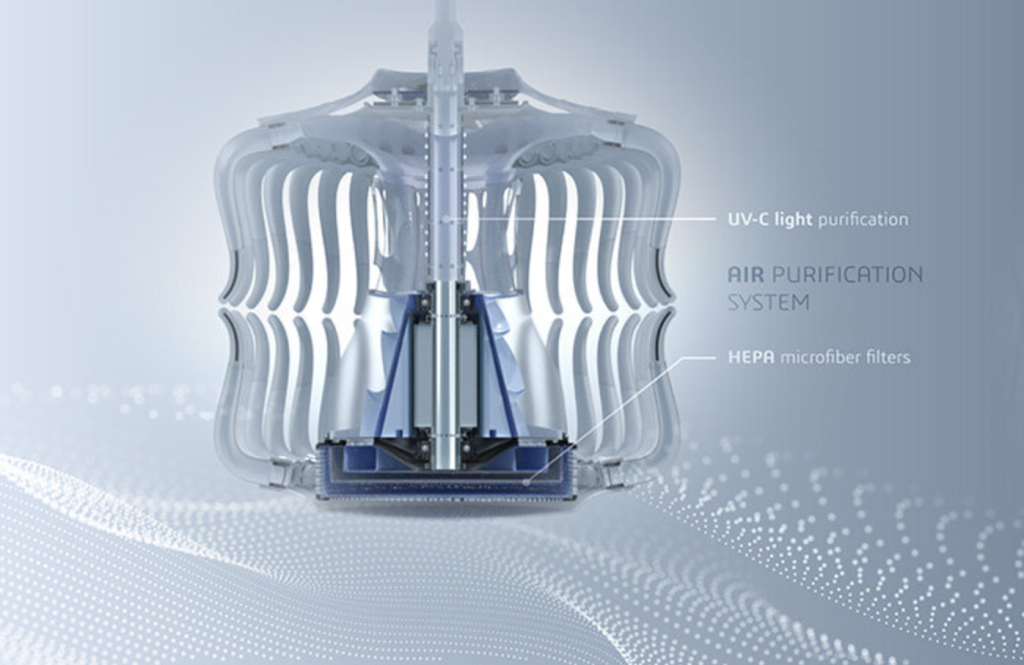
Universities unveil research breakthroughs
Researchers at Rutgers University have developed testing strips that are capable of picking up the symptoms of coral bleaching, a phenomenon that leaves reefs more vulnerable to disease and death. To make it easier for divers to read these strips, the team has also used an Ultimaker 3D printer to produce a smartphone holder, from which users can scan and analyze their results out in the field.
At the Massachusetts Institute of Technology, scientists have come up with a way of 3D printing structures capable of sensing their interactions with the environment. The team achieved this by integrating air channels into lattice parts during 3D printing, resulting in structures that provided them with feedback once squeezed, bent or stretched.
Scientists at Cornell University have used 3D printing to discover the height at which human beings can jump into water from, without suffering serious injury. Specifically, the team have used the technology to produce model divers in various poses, before fitting them with sensors and dunking them from different heights in front of a slow-mo camera.
Results showed that foot-first divers could only survive a 15-meter dive without injury, while head-first divers wouldn’t be able to last through a fall of any more than 8 meters bruise or break-free. While divers have managed to break these height barriers before, the scientists say this is due to the positions divers adopt, in which they flex muscles at the right moment to escape injury.

Engineers at the Polish Academy of Sciences are developing a new Fused Filament Fabrication (FFF) technology for processing continuous fiber-reinforced polymers like PEEK and PEKK. Leveraging the pre-impregnated composite tapes used in the Automatic Fiber Placement process as feedstock, the method being honed via the ‘3Dfy Project’ could yield lightweight parts with high loading resistance. As such, its developers say it has aerospace, automotive and biomechanical potential.
In China’s Zhoukou Normal University, researchers have devised a moldflow simulation analysis workflow that allows users to analyze the performance of the gas circulation filtration systems used in metal 3D printers. While the team has deployed its approach to develop an enhanced 3D printed formed cavity model, they say further testing could yet unlock further SLM optimization opportunities.
Finally on the research front, a team at the University of Cambridge has trained a multi-head neural network to automatically identify when 3D printed parts deviate from optimal printing parameters. Using a dataset composed of 1.2 million images from 192 different parts, the software is said to enable real-time detection and rapid correction of errors across machines, materials, toolpaths and extrusion methods.
New 3D printed building projects in Thailand and India
Moving on to construction, India will soon have its first 3D printed post office, with reports suggesting that it could take less than a month to build. Set to open in the Southwestern state of Karnataka, the 1,000 square foot structure is expected to cost around a quarter of what it would otherwise cost to erect it via traditional methods.
“We are keen on building low-cost post offices. Hence, we approached Larsen & Toubro Construction in connection with building our Halasuru Bazaar sub-post office,” S Rajendra Kumar, Chief Post Master General of Karnataka Circle told The New Indian Express. “It is said to be the only company undertaking 3D printing-enabled construction in India.”
In Thailand, cement and construction materials business SCG has also unveiled its second commercial 3D printed building in the area of Bang Son. Manufactured from panels that were made off-site before being shipped in, the structure took just 90 days to construct, with an estimated time saving of 35% compared to conventional building methods. Through 3D printing the structure, it’s also thought the firm was able to drive down project waste by 70%, and its embodied CO2 content by 15%.
Funding awarded by ATTRACT-ive research program
The ATTRACT European research initiative has awarded €28 million to 18 R&D projects across the continent, at least one of which is set to center around 3D printing. Having been picked, a team at CERN is planning to work with five project partners to develop a new way of producing cooling system components via a combination of 3D printing methods.
In doing so, the team behind the initiative aims to consolidate parts within such devices to make them lighter, smaller, and better placed for cooling impact. If successful, it’s thought the program could enable the development of complex cooling systems that either reduce fuel consumption in the aerospace industry, or can be marketed as a means of naturally refrigerating plant-based products.
Swathe of medical 3D printing firsts announced
In the first of many recently unveiled medical advances, researchers at Baylor University have developed a method of 3D printing scientific images and charts into tactile versions for the blind and visually impaired. During testing, these ‘lithophanes’ have proven capable of presenting data with such clarity that blind chemists were able to read and relay it at least as well, if not better, than sighted counterparts.
A team at the Netherlands Cancer Institute (NKI) has managed to 3D print and graft an artificial titanium jaw into a patient with head and neck cancer. As part of the procedure, which is believed to be a world-first, the patient was fitted with a prosthetic that has the same fit and mucosal pressure as the original, thus reducing any risk of complications.
Over in Tanzania, Creality Brand Ambassador Kyle Reeser has also worked with clinics to 3D print low-cost prosthetics and orthotics for children and adults in communities there. Over three days earlier this month, Reeser collaborated with staff in the city of Musoma to get them set up with six Creality systems, and they’re now using them to create custom, low-cost artificial limbs for local amputees.
On a more commercial level, spinal fixation device developer Nexus Spine has launched a 3D printed posterior lumbar fixation system. Thanks to its unique design, which allows it to be attached to pedicle screws rather than via a set of proprietary screws, the PressON is a quarter of the size of traditional aids. The system is also said to be quicker to implant, while eliminating the risk of screw loosening.
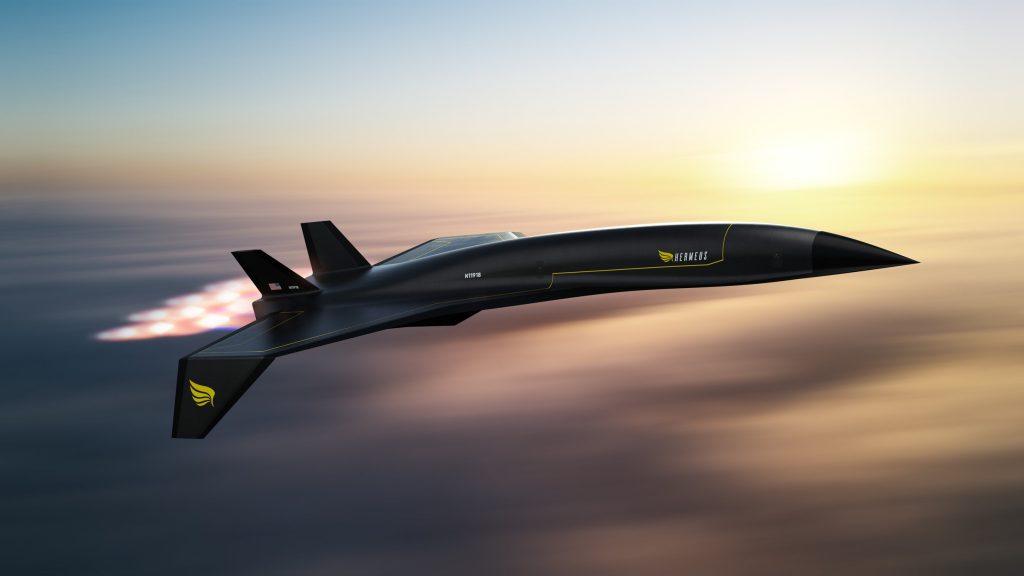
3D printed rockets and jets close-in on take-off
Velo3D has revealed that its 3D printers will be used to build some of the world’s fastest hypersonic aircraft. Using its acquired Velo3D Sapphire and Sapphire XC 3D printers, Hermeus now intends to manufacture elements of ‘Chimera,’ the turbine-based combined cycle engine that’s set to power its high-mach speed Quarterhorse aircraft.
On the launch front, Relativity Space has completed a static fire test of the first stage of its 3D printed Terran 1 rocket, in which it managed to fire all nine of the rocket’s Aeon 1 engines for a total of 20 seconds, ahead of its inaugural launch.
Industrial laser specialist Nuburu has also been awarded an AFWERX SBIR Phase II contract to help develop a blue laser-based metal 3D printer with a focus on high speed and dimensional accuracy. According to the firm’s Executive Chairman Ron Nicol, the initiative will help “bring area printing, with its high throughput capabilities and cost advantages, to key markets such as aerospace and automotive.”
The contract announcement closely follows the news that Nuburu is set to go public as a $350 million business via a merger with Tailwind Acquisition in early-2023.
Elsewhere in aerospace, Conflux Technology is targeting AS9100D certification. The firm has already passed the first stage of the accreditation, which one of its Business Analysts Andrew Milner calls a “step up in its Quality Assurance strategy,” and a further “commitment to providing the highest standards of quality and technical excellence.”
Introducing microscale and fabric 3D printing advances
Two-photon polymerization (2PP) 3D printer manufacturer UpNano has announced the development of a novel frame that allows for the compensation of miniscule unevennesses during 2PP production. Known as the ‘Substrate Tilt Frame,’ the device can be fitted with chuck-holders for wafers between 2 to 6-inches, in a way that allows for the precise printing of both a nano and centimeter-scale structures.
“By equipping any NanoOne printer with the Substrate Tilt Frame”, explains Denise Hirner, Head of Marketing and Business Development and co-founder of UpNano, “one maximizes the precision of the print result especially of large-scale structures.”
Maker Fraens has also made an additive manufacturing advance (albeit a very different one) with the development of their 3D printed braiding machine. The system is capable of braiding using six bobbins, which work by weaving around each other and sliding along a guide plate, before being passed between a series of gears and through a guide ring.
Able to process 42 cm of braided cord per minute, the machine is open-source. As such, those interested in 3D printing their own download the braiding system design files here.
Similarly, in another open-source innovation, Belgian designer Maud Bausier has unveiled a 3D printed fermenter. Designed to facilitate the growth of Tempeh, a traditional Indonesian food made from fermented soybeans, the device features only a handful of parts, including a fan, heating pad, electronic board, screen, button and temperature sensor.
As with Fraens’ braider, it’s possible to download the design files for Bausier’s 3D printed soybean fermenter via the dedicated project page.
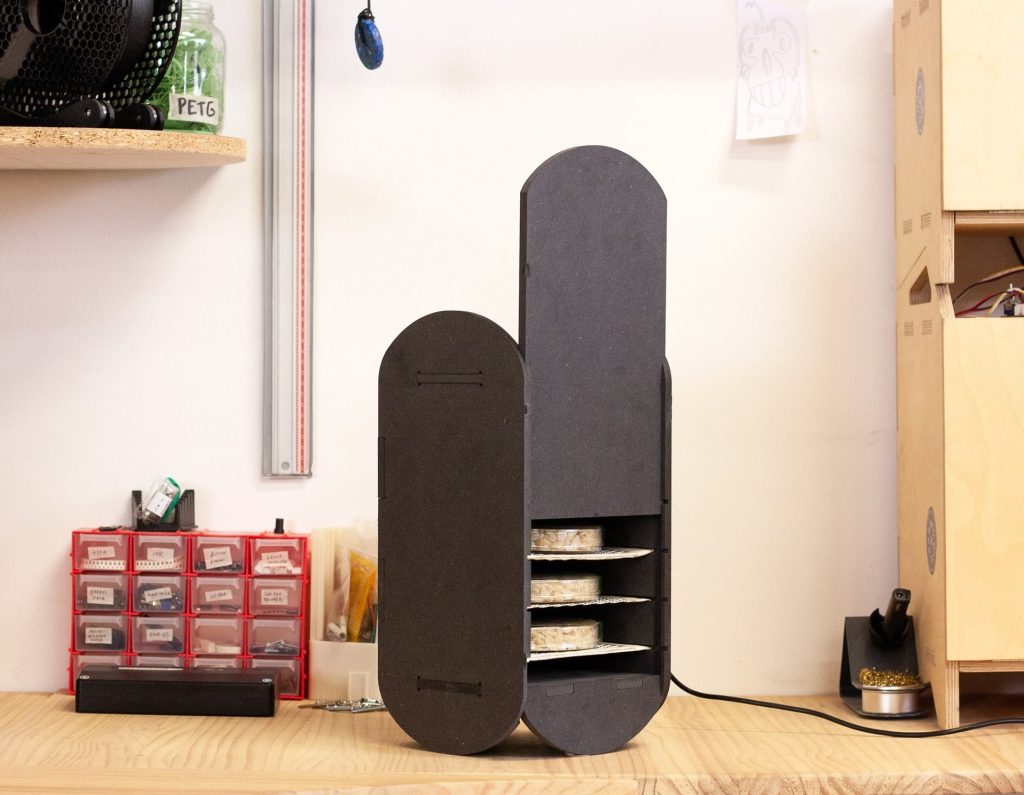
‘Responsible Design for AM’ event announced
The Loughborough University-based Design for AM Network is planning to hold a free one-day online event on September 6, 2022. Set to focus on responsible design for additive manufacturing (DfAM), the event’s interactive sessions will explore current perspectives from grassroots right up to large-scale initiatives.
As part of the program, Loughborough and Western University academics are also set to give talks on the issues of sustainability, open-source innovation, inclusion and social responsibility, with speakers expected to include open-source advocates Joshua Pearce and Adrian Bowyer, as well as Fishy Filaments’ Ian Falconer.
Those interested can find out more about the event or sign up for Responsible Design for AM here.
3D printing addresses clean energy needs
Electrified powertrain system developer Hyliion has announced the acquisition of hydrogen and fuel agnostic generator technology from GE. Having bought one of GE’s KARNO generators, a device built with 3D printed thermal components, the company expects to achieve efficiency gains of 20% or more, which could provide it with fuel cost savings and extend the range of vehicles it’s fitted to.
“Solving climate change, whether through adopting electric vehicles or reducing emissions from manufacturing sites, requires clean, efficient and dependable electricity,” said Thomas Healy, CEO of Hyliion. “Hyliion will leverage the KARNO onboard the Hypertruck, creating a solution that will operate on various fuel sources that are available today, while remaining future-proofed to run on hydrogen when it becomes widely accessible.”
In a similarly energy-related 3D printing application, manufacturing service provider Rosswag Engineering has also used the technology to develop high-performance heat exchangers for fuel cells. Working with the University of Hanover and Hülsenbusch Apparatebau, the company has 3D printed tube bundles and plate recuperators from the thermally-resistant steel AISI 309.
During testing, these parts have proven capable of raising the rate of heat transfer by over 70%, while taking up less than 5% of the space of conventional heat exchangers.

Big brands like Adidas and Sennheiser turn to 3D printing
Concluding this week’s update with the latest 3D printing applications, audio specialist Sennheiser has introduced additive manufactured headphones. Starting at a lofty price point of £599, the firm’s IE600 headphone housings are said to have been 3D printed from AMLOY-ZR01 powder, as a means of manufacturing them within tight tolerances.
Adidas has unveiled its latest version of its most advanced running shoe, the ‘4DFWD.’ 3D printed using Carbon’s Digital Light Synthesis technology, the shoe features a unique bowtie-shaped lattice midsole, which transforms vertical pressure into horizontal force in a way that’s designed to provide runners with a ‘non-stop smooth forward transition.’
German clothing brand WertellOberfell has also used 3D printing to develop an innovative pair of shoes that adapt to feet so snuggly, they don’t require laces to wear. The ‘Auxetic Wear’ shoes build on the principles of auxetics, or objects with a negative Poisson’s ratio, such as a snake’s skin, that change dimensions when stretched. FFF 3D printed from TPU, the boot is still at the prototyping stage, and it’s thought other fabrics could yet be added to it prior to commercial launch.
Moving from 3D printed fashion into fleet management now, High Speed Extrusion developer Essentium has revealed that Additive at Scale has begun using its technology to create asset tracking solutions. Since being contracted by Blues Wireless to develop a device that offers GPS and accelerometer functionality, the firm has managed to print 100 pilot units with optimized electronic enclosures.
Lastly, Korean 3D printing factory Glück has posted a video of a 3D printed robot production line, on which humanoid bots ‘come to life.’ Making the faces of these bots from UV resin is said to allow for smoother textures, while the process of doing so involves creating a lattice that hangs out of their eyes and nostrils. Readers seeking some nightmare fuel are encouraged to watch for themselves below.
To stay up to date with the latest 3D printing news, don’t forget to subscribe to the 3D Printing Industry newsletter or follow us on Twitter or liking our page on Facebook.
While you’re here, why not subscribe to our Youtube channel? featuring discussion, debriefs, video shorts and webinar replays.
Are you looking for a job in the additive manufacturing industry? Visit 3D Printing Jobs for a selection of roles in the industry.
Featured image shows the Sliced logo on Hermeus’ Quarterhorse aircraft. Photo via Hermeus.



